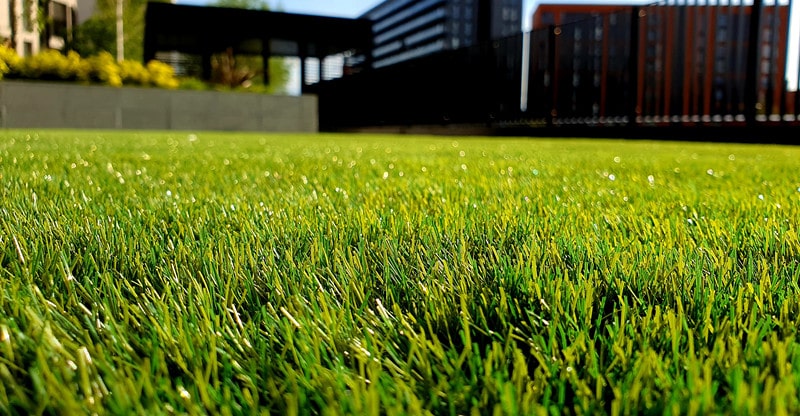How To Keep Your Lawn Green During Hot Weather
Hot weather means summer, which means fun, vacations, travels, beaches, and sunshine. However, it can also take a toll on your lawn. The same way you can get overly hot and exhausted from hot weather, your lawn can, too.
We’ll provide you with a few tips to prevent that from happening, but first, let’s take a look at the two main factors that damage grass quality.
Heat waves
Excessive hot temperatures can reduce your lawn to nothing more than brown and yellow dry patches. The heat drains the soil, and there’s not enough water that the grass needs. In turn, you think the logical thing: that your grass needs more water, which leads to the second factor.
Overwatering
When grass is looking at its worst and is dry and patchy, people tend to overwater it thinking that’s the remedy. When you overwater, you’re actually drowning it. The soil doesn’t receive enough oxygen, and this leads to the soil becoming more compact, unable to support microbial activity, which prevents grassroots from digging deep.
Signs of overwatering could be root rot, lawn fungus that appears as a round or irregular shape of straw-colored patches, or a shallow route system.
How to Protect Your Lawn
Now that we know the main two culprits, let’s offer some solutions to your problem. Before your grass suffers from the heat, there are a few things you can do to keep the lushness your lawn is meant to have:
- Don’t walk on the grass – If the sun and heat aren’t enough, imagine the pounding grass gets from foot traffic. Walking on dry grass beats it down and it can’t spring back, which can cause damage to the grass. On the other hand, when it’s wet, walking on it can lead to compacted soil. In both cases, walking on the grass causes lawn stress. So, it’s best to keep walking to a minimum or stay off the grass completely if you can.
- Trimming – Concerning hedges, they typically overgrow and become too bushy during the wet season. Regular hedge trimming stimulates their growth during that season. Untrimmed bushes, trees and hedges make a lawn look shaggier rather than manicured. You can find the local tree experts for help if you need. While visiting this page, you can see all the benefits of properly trimmed hedges. Aside from the fact that it adds curb appeal to your home, it also promotes good health for your plants.
- Mowing – There is a direct relationship between cutting height and keeping the grass green. The hotter it is, the better to keep blades a bit longer than usual. This helps protect the foundations under, where the soil won’t receive too much sunshine. Before, a cutting height of 1.5 inches was a recommended lawn look shaggierass blade should be kept between 2 and 3.75 inches long. Taller grass blades have a shading effect on the soil.
- Right amount of water – When people water their lawns, they usually just guess how much water is needed. For instance, many might not know that when you overwater, the tips of the grass blades will discolor, and when you underwater, you’ll probably get an overall brownish color. When watering on your own with water sprayers for the garden attached to your hose, you want to water deeply rather than frequently, which is around 2 to 3 times a week rather than daily. Frequent watering promotes a shallow root system, which doesn’t help the grass. Let the water run for a long time, so it soaks deep into the soil.
- Grass clippings – It’s healthy for grass to keep the grass clippings on the ground. When left on the lawn, they’ll break down, decompose, and replenish your soil with organic matter and nutrients. Use the one-third rule, which means never remove more than one-third of the leaf tissue when you’re mowing. This makes clippings, small enough to be dispersed across the lawn.
- Fertilizing – For good growth, you really only need to fertilize a couple of times a year. Once should be in early spring, and another in mid summer. Use a nitrogen-rich fertilizer, since that is what stimulates growth and the rich, deep green color of the grass.
When summer kicks in, that’s the time you’re going to see more problems in your lawn. If the grass always seems greener on the other side of the fence, you too can have the same. Regular maintenance throughout all seasons is the best way to care for your lawn.
If you’re at a loss and simply don’t know what to do, hiring a professional company to take care of the matter is well worth it, and it’s a sensible way to approach lawn problems.



